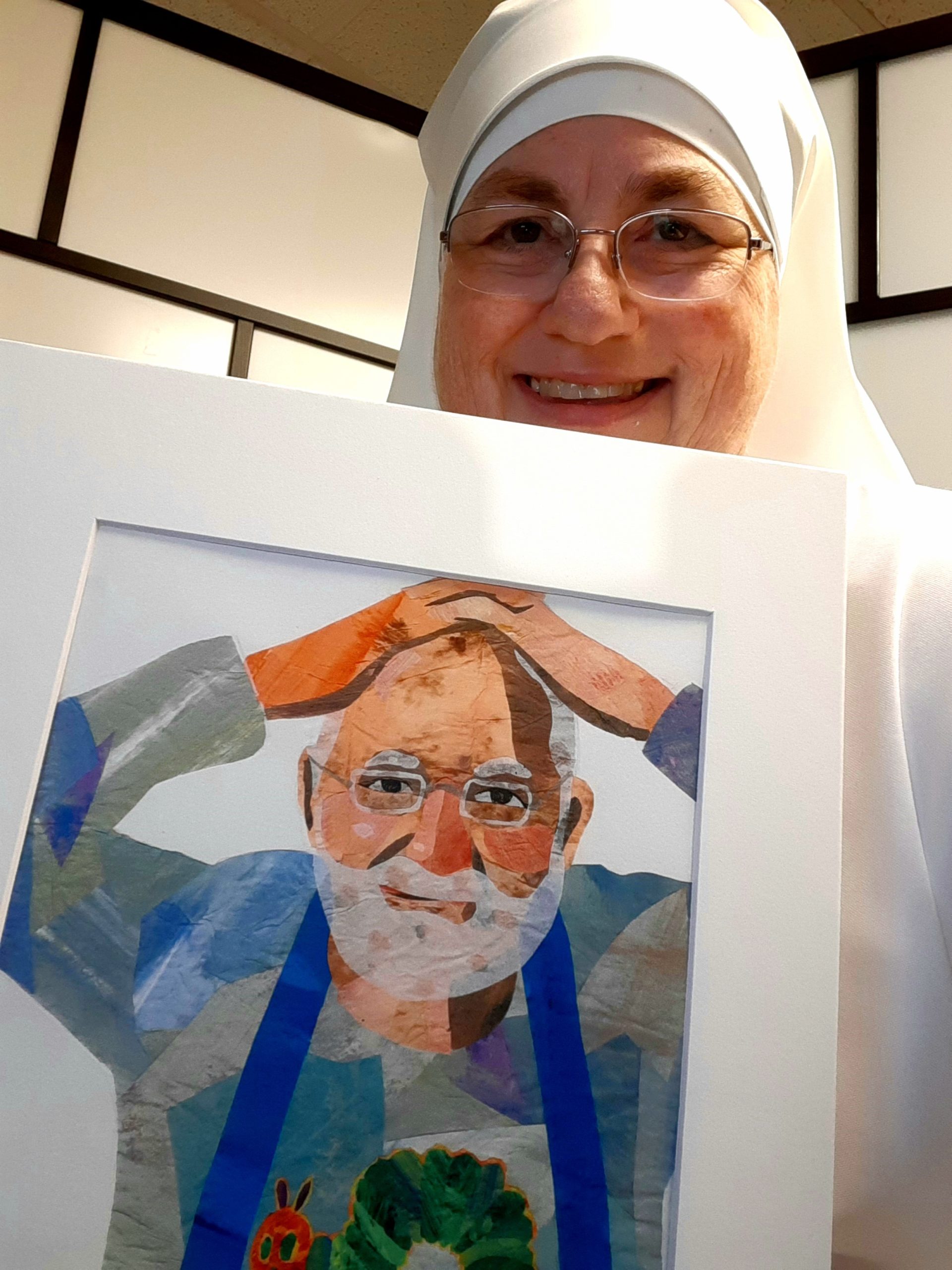In my vocation as a Little Sister of the Poor, I am involved in several aspects of our mission of hospitality to the elderly. One of my favorite things is organizing creative activities for our residents, so I’m always looking for new art projects they might enjoy.
Recently, I became intrigued with collage as an artistic medium. After watching a few online tutorials, I reached out to a professional collage artist to ask her if she had ever taught frail seniors or people with disabilities.
I was touched when I received a personal reply from Elizabeth St. Hilaire the very next day. She gave me some tips about supplies and suggested that I explore the work of collage artist Eric Carle, whose style she thought might correspond to our seniors.
I wasn’t familiar with Eric Carle, at least by name, but when I googled him, I recognized his colorful style from children’s books I’d seen when visiting my nieces and nephew. The more research I did, the more fascinated I became with Carle’s life and work.
Carle’s childlike spirit and peaceful, carefree creative process really struck me. Both Carle and St. Hilaire create vibrant “paper paintings” featuring many elements from the natural world, along with adorable animals and intriguing human beings. But while St. Hilaire creates her impressionistic images using tiny bits of hand-printed collage paper, Carle’s works are created using pieces of tissue paper he fills with seemingly random brush strokes, circular patterns, dots and splatters of paint. His style is whimsical and a bit primitive.
Watching a video of Eric Carle creating art in his studio and engaging with children, I was struck by his serene attentiveness to his craft, to nature and to other people. I couldn’t help but think that his life could have taken a very different turn.
After an idyllic early childhood, Carle moved to Germany with his parents because his mother missed her homeland. His father was drafted into the German army at the beginning of World War II, taken prisoner and eventually returned home a broken man.
As a teenager, Carle was conscripted to dig trenches along the German border. It was onerous work, forcing him to confront the dark realities of war.
After completing art school, returning to the United States and working for several years as a commercial artist in New York City, he was drafted into the U.S. army during the Korean War. He could have become hardened or cynical, but he didn’t.
In 1967 Carle was hired to illustrate his first children’s book, a job that changed his life. He then devoted the rest of his life to writing and illustrating children’s books – 70 in all, with over 170 million copies sold! Recent interviews reveal a man very much at peace, someone who grew wiser, more insightful and more childlike as he aged.
Eric Carle’s approach to life seems tailor-made for our present situation. “Simplify, slow down, be kind,” he often said.
And on a wall in the Eric Carle Museum of Picture Book Art is the following inscription: “Children’s books remind us in uncertain times that there is still much we do know: Kindness matters. Laughter is essential. Caring for each other is everything.”
Carle passed away in his home in Massachusetts on May 23, 2021.
While visiting my family in New England the week after Carle’s death, I had a conversation with my young cousin, a precocious six-year-old. She told me about dressing up as a character from her favorite book, The Very Hungry Caterpillar, for a recent school assignment.
The Very Hungry Caterpillar is Eric Carle’s most popular title.
I asked her what makes her appreciate Carle’s books so much. Her response stunned me. Eric Carle, she said, “makes simple beauty out of pieces of nothing.”
I don’t know if Eric Carle was a Christian, but his life and work seem to epitomize Gospel simplicity and Pope Francis’ vision of older people as guides who can help the young formulate their own dreams.
As we look forward to celebrating the first World Day of Grandparents and the Elderly on July 25, I feel that I have found a new friend. As I grow older I pray I will be able to make simple beauty out of pieces of nothing like Eric Carle did.
